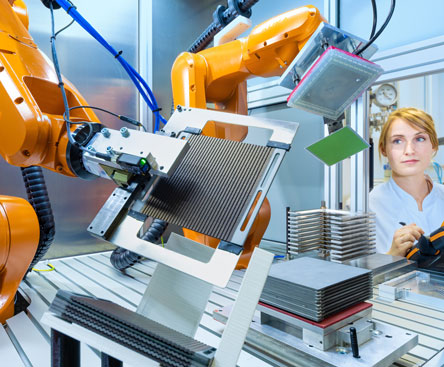thyssenkrupp nucera and Fraunhofer IKTS agree on a strategic partnership in SOEC technology

- Strengthening thyssenkrupp nucera's hydrogen technology portfolio for industrial applications through highly innovative high-temperature electrolysis (SOEC)
- Technology transfer of the electrolysis CFY stack technology developed at Fraunhofer IKTS
- Major cost advantage of SOEC technology in the application areas due to high efficiency
- Design for a later production ramp-up depending on the results of the pilot production line to test the existing technology status and achieve the necessary economic efficiency
Arnstadt/Dortmund, March 13, 2024 – thyssenkrupp nucera is positioning itself even better for the electrolysis market of the future. In order to further expand its position as a leading global supplier of electrolysis technologies for the production of green hydrogen, the company is strengthening its technology portfolio with the highly innovative high-temperature electrolysis (SOEC) of the Fraunhofer Institute for Ceramic Technologies and Systems IKTS.
thyssenkrupp nucera and the Fraunhofer IKTS are entering into a strategic partnership for this purpose. The research institute has been carrying out extensive research and development work in SOEC (Solid Oxide Electrolyzer Cell) technology for over 20 years and has done the necessary preliminary work with a view to industrializing this electrolysis technology. Together, thyssenkrupp nucera and Fraunhofer IKTS want to work to take the final steps in high-temperature electrolysis (SOEC) toward industrial manufacturing and application.
As early as the first quarter of 2025, a pilot plant planned and built by Fraunhofer IKTS is scheduled to start operation for the production of high-temperature electrolysis stacks with SOE cells – the core elements of the SOEC stacks – initially in small quantities. The strategic partnership also includes a license for the production and use of CFY stacks based on the SOEC technology of Fraunhofer IKTS by thyssenkrupp nucera.
The SOEC stack technology is based on a gas-tight oxygen-ion-conducting ceramic electrolyte with screen-printed electrodes and pressed interconnectors made of a chromium-based alloy (CFY). The electrolyte-supported cells, the choice of materials used and the design ensure high efficiency, long-term stability, robustness and cost-effective mass production. The further industrialization of SOEC technology will be based on the results of the research and development activities.
"With SOEC system solutions, we are consistently implementing our company's growth strategy. With high-temperature electrolysis, we will offer our customers an extremely powerful technology that will be another strong pillar of the new, CO2-free and therefore climate-friendly energy mix of the future without fossil fuels," says Dr. Werner Ponikwar, CEO of thyssenkrupp nucera. "Through the strategic partnership with Fraunhofer IKTS, we are strengthening our hydrogen product portfolio with a second high-performance technology for industrial scale in addition to AWE technology."
Prof. Dr. Alexander Michaelis, Director of Fraunhofer IKTS, adds: "We are very pleased to contribute our world-leading research and development expertise in SOEC technology to the partnership with thyssenkrupp nucera. In addition to the higher efficiency in electricity-to-hydrogen conversion, high-temperature electrolysis also offers the great advantage that CO2 can be actively extracted from the environment and converted together with green hydrogen into green synthesis gas and downstream products such as e-fuels. This is a key success factor for the energy transition. By upscaling CFY stack production, we are giving our system partners commercial access to this core component."
The high energy efficiency of SOEC technology will primarily benefit industries in which industrial waste heat is generated during production, as its use significantly reduces electricity consumption. Waste heat is generated in the production of green steel, ammonia, methanol, fertilizers and energy storage, among other things. In addition, the use of high-temperature technology eliminates the need for rare precious metals.
"SOEC technology perfectly complements our technology portfolio," says Dr. Christoph Noeres, Head of Green Hydrogen at thyssenkrupp nucera. "For our future SOEC system solutions, we can build on our decades of experience in the development and scaling of electrolysis plants, as we have already proven with the successful development of our 20 MW AWE module scalum®."